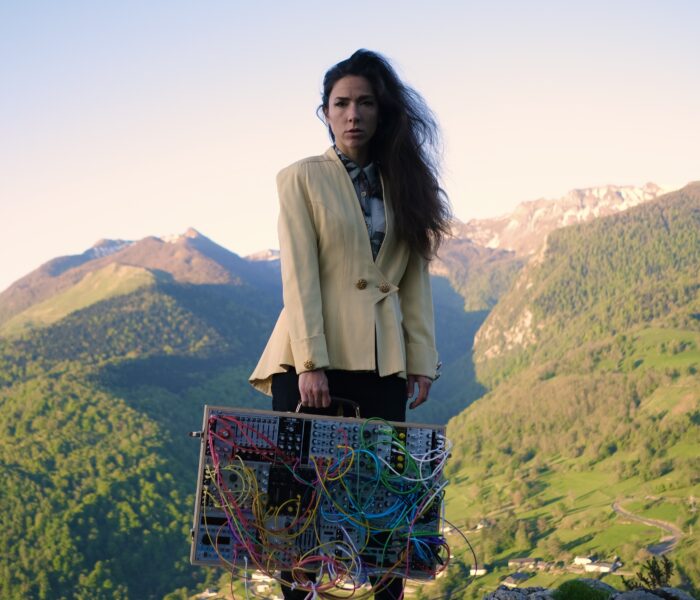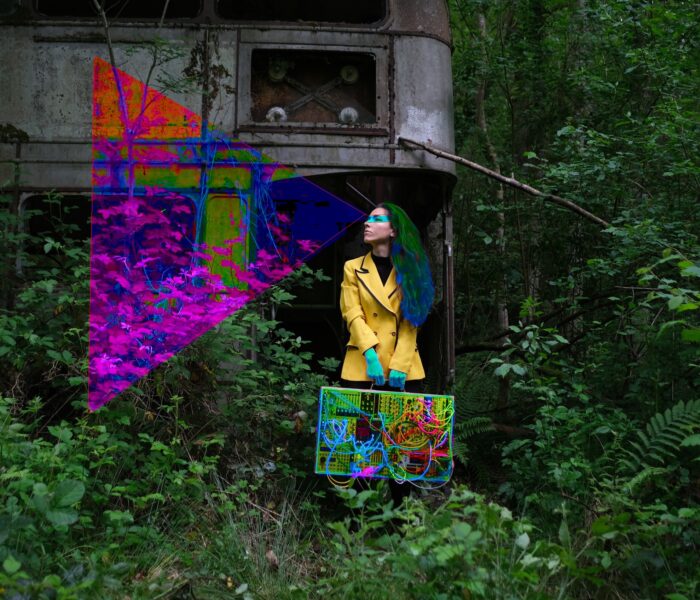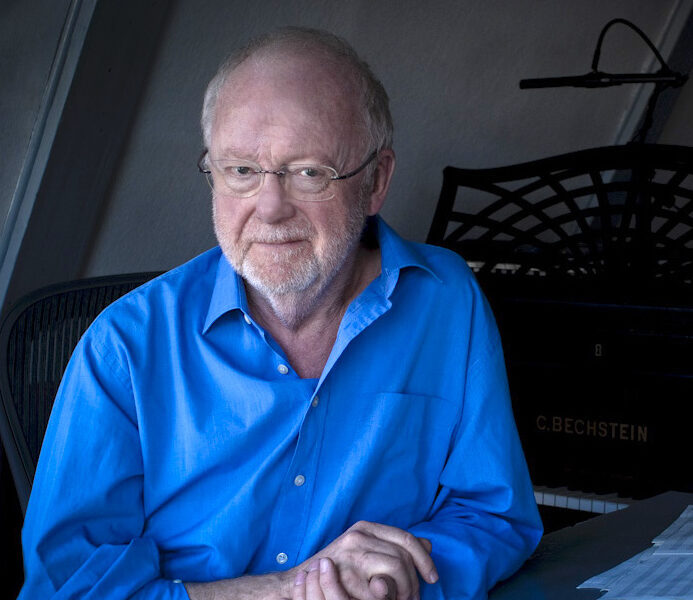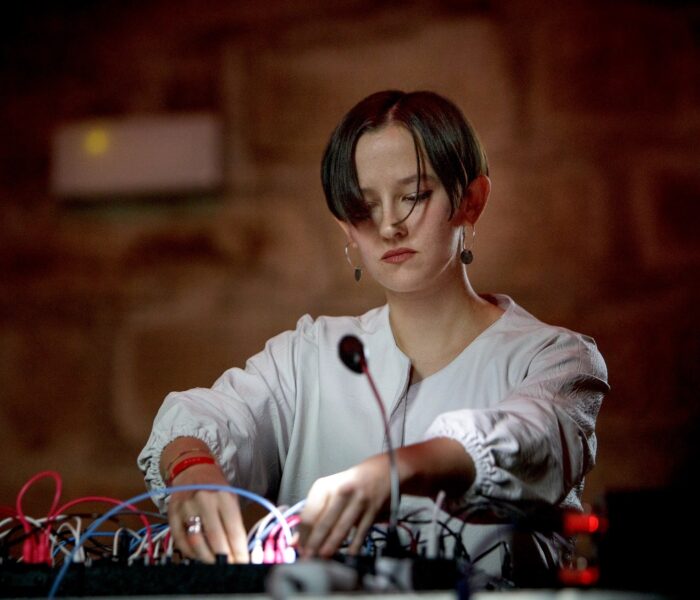General Manager of GRM (Groupe de Recherches Musicales), François Bonnet reviews the history of the modular synthesizer introduced to the institution in the 1970s, and takes stock of all the instruments now united under the same concept.
François Bonnet, you joined the GRM in 2007, where you are involved in presenting and programming the musical season. In 2015, you replaced Christian Zanesi as Artistic Director, and in 2018 you succeeded Daniel Teruggi as GRM Director. Before we get into our subject, could you tell us a little more about the GRM's activities and the mission that such an institution has set itself today?
First and foremost, we support electroacoustic and experimental electronic music through musical production and a policy of commissions and concerts (our " Multiphonies " season), as well as composer residencies in our studios. Of course, we also pursue our research activities, both "fundamental" and "applied", notably around technological issues, with creative software such as GRM tools, as well as the development of new tools (GRM Player). Our third mission is transmission, through a wide-ranging editorial policy: book publications (we've launched a new collection called "SPECTRES", much appreciated by our readers), discographic editions, production on France Musique with the weekly program " L'Expérimentale " and educational activities, notably a partnership with the Gustave-Eiffel University for the teaching stream: three areas of activity already initiated by Pierre Schaeffer and on which the GRM still operates. The arrival of Présences électronique in 2005 under the leadership of Christian Zanési has, moreover, made a major contribution to renewing the audience and crossing generations.
Research pioneers such as François Bayle, who headed the GRM for many years, claim to have gone through several technological revolutions, from the floppy disk to the computer. What role did the modular synthesizer play at GRM in the 1970s?
When this new instrument appeared, many of GRM's composers - including Pierre Henry, who had left the institution at the time - bought a Synthi AKS, a small, handy and resourceful synthesizer. The electroacoustic palette was then enriched with complex electronic sounds, and the color of the pieces evolved somewhat. Composers such as François Bayle, Bernard Parmegiani and Ivo Malec were among those who found in these instruments the opportunity to play and modify the flow in real time. But this story had already begun a few years earlier, at GRM, notably through the acquisition of MOOG modules, but above all through "in-house" experimentation.
On the initiative of researchers such as Francis Coupigny, the GRM acquired its own modular system; indeed, Le trièdre fertile (1975), Pierre Schaeffer's last composition, is composed almost entirely of synthesized sounds from this machine. When the digital synthesizer arrived, we let it go to the Musée de la Musique, convinced that it was obsolete. Each generation of technology had a promise that swept away the previous one. We didn't yet have the historical hindsight we have today.
How do you explain the renewed popularity of the modular synthesizer since the 1990s?
The arrival of digital technology in the 1980s revolutionized working techniques, making it easier to save and store data, and introduced virtual editing, which was more precise and faster than with magnetic tape. The old machines were quickly abandoned and forgotten, until we realized that the computer had its limits and couldn't simulate everything, notably the fragility of sound that analog guaranteed and which could generate interesting springs for composition. The return to gesture, to placing hands on potentiometers, allows for more immediate action, a more inspiring relationship with the instrument. As a result, engineers once again turned their attention to these tools, developing new modules and stimulating the interest of composers, notably the Eurorack format which, along with the Doepfer brand, helped democratize modular synthesis, enabling young creators to purchase certain inexpensive modules. The appeal of modular synthesizers lies in the fact that they work in modules, and that you can gradually build up your system in stages, with a detailed knowledge of each component. You can make drones as well as highly rhythmic music with the same tool, but not with the same module or combination of modules.
How would you define analog sound, including turntable sound?
We need to distinguish between three different angles to approach analog sound: first, the analog sound of synthesis resulting from specific techniques (we'll come back to this later); then the analog sound of the electro-acoustic chain with its player, amplifiers and loudspeakers. Finally, there's the sound of the medium, vinyl, which possesses a particular grain, linked to its own technology and mechanical limitations; it's "warmer", as we often hear; it's a bit like a silver photo, less well defined than an HD digital photo, and therefore a little blurred; everything is a little more compressed, and this creates a particular grain.
But let's go back to the first synthesizers: their sound is partly linked to the construction of the time, when all the stages of electro-acoustic systems were of high quality; this has not always been the case with the democratization of the digital tool, often manufactured with components and amplification and output stages of lesser quality. I'd say that between a very good analog system and a very good digital system with good quality converters, there's no real difference in terms of sound quality; tests of analog and digital broadcasting have been carried out at GRM, switching from one system to another instantaneously; you don't really hear any striking difference; in fact, comparisons have often been made between things that are hardly comparable, such as professional analog systems with high-quality output stages and very good electronics, and mass-produced digital equipment that sometimes sounds like digital toys.
However, analog technology specifically brings into play the behavior of oscillators and voltage circuits subject to temperature changes, whereas digital signals are encoded in a way that cannot easily be altered; there can therefore be a real difference in behavior. For example, when Pierre Henry or Éliane Radigue made feedbacks with analog circuits, they could work on a multitude of nuances. In a purely digital world, such as the MaxMSP software, logical feedback causes the software to crash.
Today, what place is given to Éliane Radigue's ARP 2500? It's become a very rare, if not unobtainable, instrument; will it go to the Museum too?
The idea, in agreement with Éliane, is for the instrument to be used. The advantage of these analog synthesizers is that they're still easy to repair and maintain, unlike some digital synthesizers, which are too complex and miniaturized for us to work on ourselves; we have to send them back to the factory, if it still exists! Analog synthesizers have a longer lifespan. The ARP 2500 is an old machine that requires care and attention; but when the request is in keeping with the spirit of Éliane's personality, we make it available to composers in our studios. It's not meant to be a museum piece, as long as it works and can be repaired. The last person to use it was Kali Malone, a young American-Swedish composer who gave a very fine concert in the auditorium of the Maison de la Radio et de la Musique during a "Multiphonies" evening in October: a piece for tape with, among many other sounds, that of the ARP 2500. A studio instrument, Éliane Radigue herself has never played it live. It can be used to create sequences and materials that are edited, mixed and added to other materials to create electroacoustic works.
Do you organize training courses or composer residencies?
No. You have to be careful with a machine like this; it's fifty years old! There are a few of us at the GRM who know it well. We explain the basics of how it works, and then let the composer explore it; it's not very complicated to get to grips with. There are some specific slide connections to create connection points; these take some getting used to. Otherwise, the ARP 2500 has modules that people are familiar with: oscillators, filters, amplitude modulators, noise generators, sequencers. For sound artists familiar with modular synthesizers, the tool is fairly easy to master.
Does GRM own any other types of modular synthesizer?
We have a SERGE synthesizer, which belonged to the late Laurent Dailleau. We also own things like an EMS Synthi AKS and other machines acquired fairly recently. We also created a new in-house synthesizer from scratch, inspired by the old GRM synthesizer. It has been brought up to date, retaining the distinctive timbre of the old oscillators. We also have some little-known but fascinating modular systems, notably those of Rob Hordijk, a highly inventive modern-day engineer.
More than a vintage trend, the modular synthesizer seems to have found its place in today's electroacoustic composition landscape...
The modular synthesizer is a concept; it's made up of functional modules that are linked together by various strategies: by cables, like the SERGE and the Eurorack system; by matrix, like the Synthi or the GRM synthesizer, which avoids a forest of cables; by slides, like Éliane Radigue's ARP. Approaches can be very different between a Moog, a Buchla, a SERGE, etc., with systems that are not necessarily compatible, sometimes with different control voltage values. There are also divergent "schools" and stylistic tendencies depending on the machines and their philosophy. All these instruments have their own singularity and personal orientations; it's not all that homogeneous: the modular synthesizer is a bit of an umbrella concept with a lot of relief and difference.
We could draw a parallel between the history of the Ondes Martenot and today's manufacturers, who continue to develop the instrument...
Certainly; we could also evoke the electric guitar through a whole variety of instruments, destined for jazz, rock, metal and so on. Some people use metal guitars for jazz, and vice versa... This brings us back to the question of lutherie and orthodoxy or heterodoxy. If the modular synthesizer is enjoying such a revival today, it's also due to the fact that so many new modules have appeared on the market. It's a real resurrection! The instrument is growing, with new inventions. But it's also worth pointing out that many of today's modules are digital, such as wavetable oscillators, which give access to a whole bank of timbres on the synthesizer, allowing you to switch from one to another in the blink of an eye.
The modular synthesizer with all the modern conveniences...
That's exactly what it is!
Interview by Michèle Tosi



)



